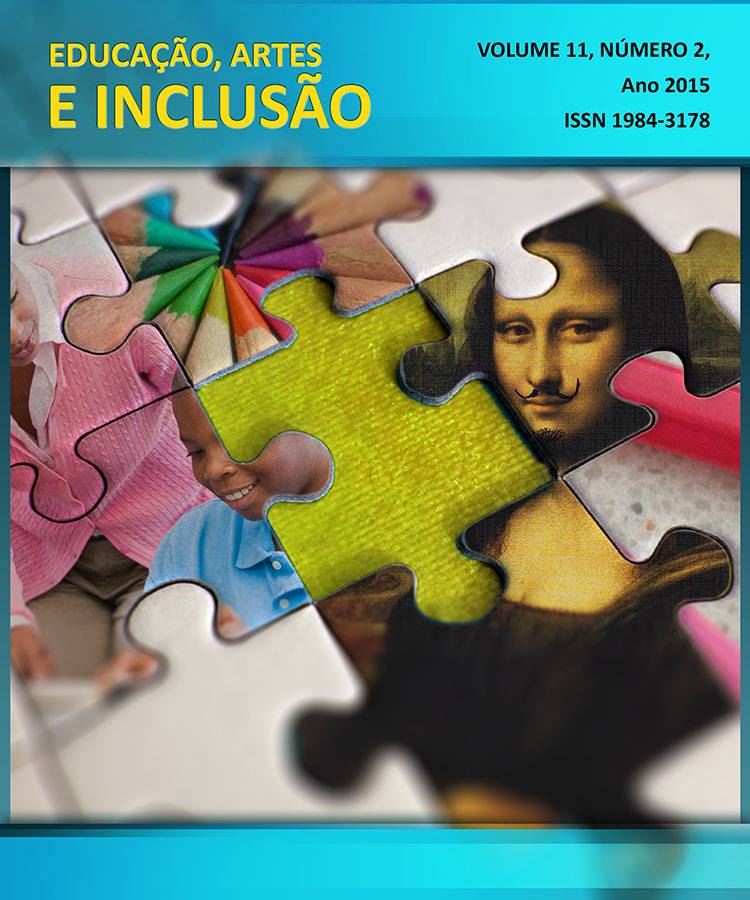EDUCAÇÃO, ARTE E INCLUSÃO NA PERSPECTIVA MONTESSORIANA
DOI:
https://doi.org/10.5965/198431781122015029Palavras-chave:
Inclusão, Arte educação, Pedagogia Montessoriana.Resumo
O presente artigo descreve o contexto da arte educação em uma escola Montessoriana, voltada para a inclusão de alunos com deficiências. Maria Montessori1 acreditava que as crianças aprendem igualmente, mas em ritmos diferentes. Foi através de um estudo realizado com crianças com deficiências que ela obteve esta premissa. Na Pedagogia Montessoriana o aluno é observado dentro dos componentes emocionais, buscando, desta forma, desenvolver a totalidade da personalidade da criança nas relações lúdicas com a arte, pois assim o estudante tem a possibilidade de se expressar livremente, desenvolvendo a ousadia de um pesquisador, experimentando e percebendo novas capacidades de aprender. Portanto, a educação inclusiva se faz presente no ensino montessoriano por não estar fechada por disciplinas. Sua filosofia, organização e estrutura escolar são abertas para a percepção de diferentes raciocínios, culturas e ritmos de aprendizagem.Downloads
Downloads
Publicado
Como Citar
Edição
Seção
Licença
A Revista Educação Artes e Inclusão é um periódico que segue a Política de Acesso Livre. Os artigos publicados pela revista são de uso gratuito, destinados a aplicações educacionais e não comerciais. Os artigos cujos autores são identificados representam a expressão do ponto de vista de seus autores e não a posição oficial da Revista Educação, Artes e Inclusão [REAI].
Autores que publicam nesta revista concordam com os seguintes termos:
(a) Autores mantém os direitos autorais e concedem à revista o direito de primeira publicação, com o trabalho simultaneamente licenciado sob a Licença Creative Commons Attribution que permite o compartilhamento do trabalho com reconhecimento da autoria e publicação inicial nesta revista.
(b) Autores têm autorização para assumir contratos adicionais separadamente, para distribuição não-exclusiva da versão do trabalho publicada nesta revista (ex.: publicar em repositório institucional ou como capítulo de livro), com reconhecimento de autoria e publicação inicial nesta revista.
(c) Esta revista proporciona acesso público a todo o seu conteúdo, uma vez que isso permite uma maior visibilidade e alcance dos artigos e resenhas publicados. Para maiores informações sobre esta abordagem, visite Public Knowledge Project.
Esta revista está licenciada com uma Licença Creative Commons Atribuição-NãoComercial 4.0 Internacional. Esta licença permite que outros remixem, adaptem e criem a partir do seu trabalho para fins não comerciais, e embora os novos trabalhos tenham de lhe atribuir o devido crédito e não possam ser usados para fins comerciais, os usuários não têm de licenciar esses trabalhos derivados sob os mesmos termos.





